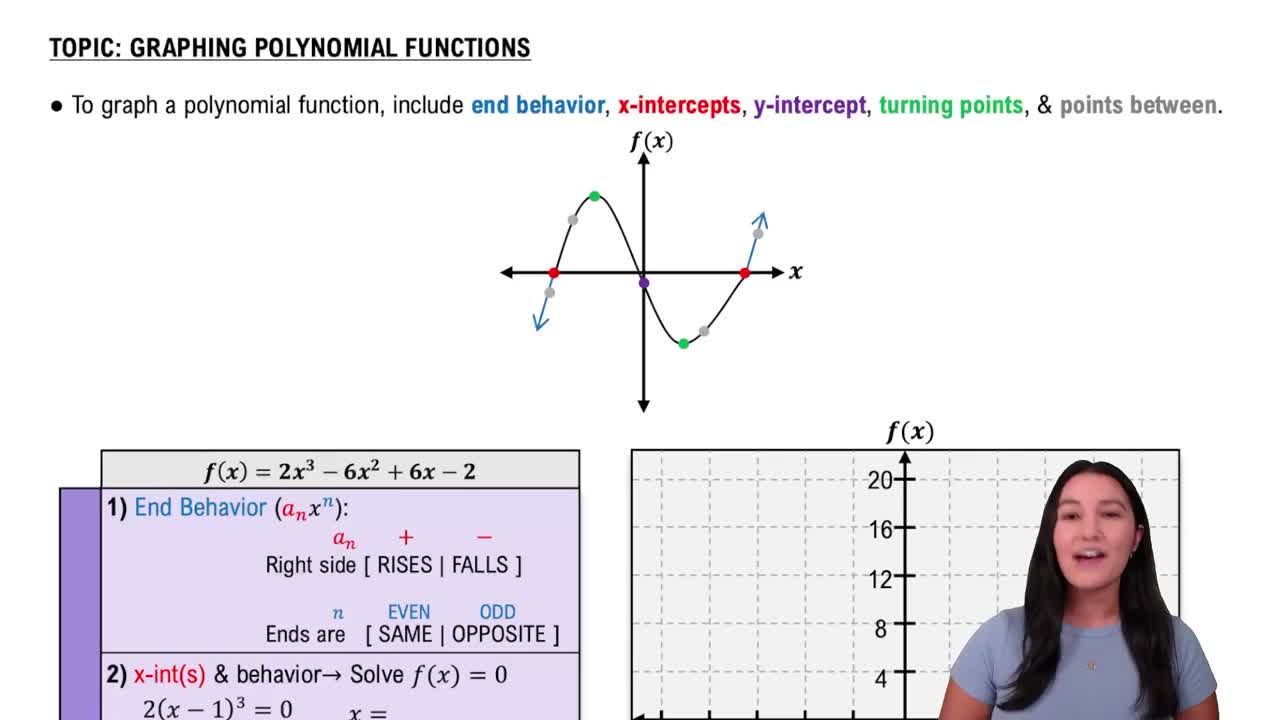Here are the essential concepts you must grasp in order to answer the question correctly.
Polynomial Functions
A polynomial function is a mathematical expression involving a sum of powers in one or more variables multiplied by coefficients. The general form of a polynomial in one variable is f(x) = a_n*x^n + a_(n-1)*x^(n-1) + ... + a_1*x + a_0, where n is a non-negative integer. Understanding the structure of polynomial functions is essential for analyzing their graphs.
Recommended video:
Introduction to Polynomial Functions
Factored Form of Polynomials
The factored form of a polynomial expresses it as a product of its linear factors. For example, the function f(x) = -(x-2)(x-5) is in factored form, indicating its roots at x = 2 and x = 5. This form is useful for determining the x-intercepts of the graph and understanding the behavior of the function around these points.
Recommended video:
Introduction to Factoring Polynomials
Graphing Polynomial Functions
Graphing polynomial functions involves plotting points based on the function's values and understanding its key features, such as intercepts, turning points, and end behavior. The degree of the polynomial influences the number of turns and the overall shape of the graph. For the given function, recognizing its roots and the negative leading coefficient will help predict that the graph opens downwards.
Recommended video:
Graphing Polynomial Functions
 Verified step by step guidance
Verified step by step guidance Verified video answer for a similar problem:
Verified video answer for a similar problem:



 6:04m
6:04m